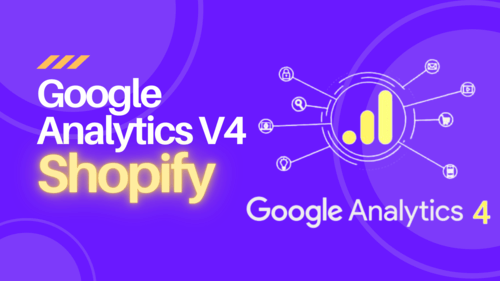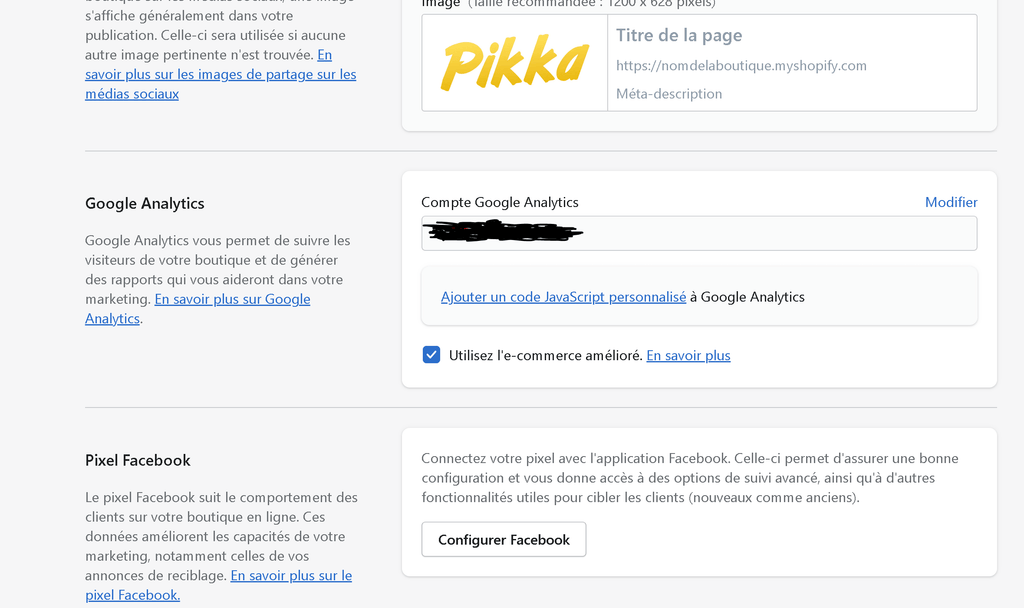Google Analytics 4 is finally coming to Shopify in the coming weeks! Good news that many e-merchants were impatiently waiting for: Google Analytics in V4 will arrive on Shopify stores natively , i.e. in the back office without an application, by March 2023 (normally)
Why Google Analytics 4?

So already, why does Google Analytics offer us a fourth version of its tracking analytics platform?
Well, you should know that Google Analytics V3, otherwise known as Google Analytics universal, is already 10 years old!
And yes, launched in 2012, GA universal does not correspond to the problems of the modern web.
Gossips will also say that this is a major change error for user tracking: server side, GDPR, ad and script blocker, cookieless... so many concepts and things that did not exist or that very little existed in 2012 and which are now the daily life of all managers of e-commerce sites or not.
With this in mind, Google Analytics has released V4 of its tracking pixel to offer ever more features to its customers (almost all of us) and of course to comply as best as possible with the GDPR and modern regulatory and technical constraints. The goal is obviously to do without the famous cookies.
The idea of this article is obviously not to judge the technical background but to present how and when to switch to Google Analytics V4 if you feel like it.
We may do another article on Pikka's e-commerce blog to share our point of view on Ga4, user tracking and “the necessary constraint” of advertising performance measurement, but that's another subject.
In short, GA4 is the future on Google's side and it was surprising that Shopify did not offer a version natively integrated directly into the back office. This will be fixed by March 2023.
The end of Google Analytics V3
And yes because you should know that the version of Google analytics V3 is scheduled to stop around July 2023 which does not leave much time to switch to Google Analytics V4!
From July, all Google Analytics V3 accounts will also have to offer a V4 in order to continue to collect data.
The “authorized” migration time is 6 months. In other words, at the end of 2023, the data will no longer even be collected by GA3 and your traffic may show zero in Google analytics if you have not done the migration.
For many merchants who installed Google Analytics V3 from the native Shopify interface, it was not possible to change the script or format and upgrade to V4. But this will now be possible from March 2023.

Beware, event counting in Google analytics V4 is a bit different from Google Analytics V3 and will definitely require some training to get the most out of GA4. You may get slightly different data between GA3 and GA4. In the business, this is called a change in tracking scope.
What is Shopify saying so far?
Here is what can be found on the Shopify site at the moment:
Google Analytics 4
Google is sunsetting Universal Analytics in July, 2023 , and is being replaced by Google Analytics 4 , which is Google's next-generation measurement solution. Universal Analytics will continue to collect data until it's sunset in July 2023 , and data will remain accessible for at least 6 months afterwards. By March 2023 , you'll be able to switch to Google Analytics 4 on Shopify.
With its flexible event-based data model, Google Analytics 4 allows you to see unified user journeys across your website and apps. It uses Google's machine learning to bridge gaps in your data with modeled insights and predictive capabilities that you can use to get better results and grow your business. because it doesn't rely exclusively on cookies, Google Analytics 4 is built to keep up with a changing ecosystem, so that you can learn about your customers even with gaps in your data.
There is no action required from you at this time. Additional guidance and communications from both Shopify and Google with next steps will be provided soon.
in other words in French:
Google Analytics 4
Google is ending Universal Analytics in July 2023 and replacing it with Google Analytics 4, which is Google's next-generation measurement solution. Universal Analytics will continue to collect data until its demise in July 2023, and the data will remain accessible for at least six months. In March 2023, you will be able to upgrade to Google Analytics 4 on Shopify.
With its flexible event-based data model, Google Analytics 4 lets you see unified user journeys across your website and apps. It uses Google's machine learning to fill in gaps in your data with modeled insights and predictive capabilities you can use to get better results and grow your business. Because it doesn't rely exclusively on cookies, Google Analytics 4 is designed to adapt to an ever-changing ecosystem, so you can learn more about your customers even if your data is incomplete.
No action is required on your part at this time. Further guidance and communications from Shopify and Google regarding next steps will be provided soon.
How to take advantage of Google Analytics V4 on Shopify?
For the moment, to take advantage of Google Analytics V4 on Shopify, you absolutely need an application or to pass with Liquid code integrated into the Shopify theme. Native integration has just been announced for March 2023.
If you have an existing Shopify site, you will need to think about changing the settings and planning a migration to GA4! You can contact your preferred e-commerce agency to ensure this change
When will Google Analytics 4 (GA4) be available natively on Shopify?
March 2023 will be the big date to add to your calendar to plan a migration from Google Analytics V3 to GA4 if your store is powered by Shopify.
For the moment there is nothing specific to do, except maybe train in Google Analytics V4, open a test interface and start looking at the differences and recreating its dashboards. In short, a bit of R&D.
How to make GA4 now on Shopify if you don't want to wait?
If you want to take advantage of GA4 now or get a head start on your competitors, it is always possible to integrate Google Analytics 4 on Shopify “by hand”. You have two solutions in this case. Go through Liquid code in the template or go through an application.
GA4 via apps (medium)
Let's face it right away, it's not our favorite solution at Pikka. Tracking applications can inject the GA4 code and make your job easier, of course, but control of the technical scope and data collection is much weaker.
If your budget is limited, this is an idea to try, although in this case, our advice would be to wait until March 2023 and the official release of GA4 on Shopify.

Installing a third-party application for 3 months means having to remove (by hand by a developer) the bits of code injected by the application into your theme: long, laborious, expensive and with little added value.
GA4 via code (better!)
If you absolutely need to migrate to GA4 before March 2023, the best thing is still to create datalayer files in your theme and send it all up via Google Tag Manager or via the GA4 script.
It will be necessary to do a lot of code but it is of course possible to trace the orders, the turnover and the sales.
Be careful, the work to be done is quite important and requires quite precise know-how: a mix between GA tracking and mastery of Shopify templating.
This is obviously a point 100% mastered at Pikka but this is not the case for all agencies or all freelancers.







